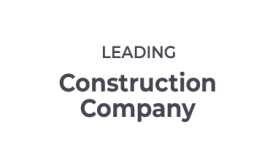Case Study
RAID Data Recovery From Damaged HDD in SYNOLOGY DiskStation DS412+ NAS
Stellar's expert data recovery minimized downtime, preserved critical data, and ensured business continuity with ISO-certified precision.
Published On :
The client was using Synology DiskStation DS412+ 4-Bay NAS Enclosure with 4 x 4TB HDDs.
One of the drives was physically damaged. On replacement with a new HDD, a new volume was created, which made a lot of data inaccessible.
RAID data recovery experts from Stellar diagnosed the root cause, transplanted the damaged read/write head, cloned the HDDs, and constructed a virtual RAID to recover all lost data.
Hard Drive Failed.
How did the crash affect the client?
The engineering team was tasked with the following challenges.
The client reported the incident to a Stellar Data Recovery expert on the phone. Our data recovery consultant asked all necessary questions to estimate the nature and extent of the damage. We advised the client to not experiment with the NAS storage, as that would have made the recovery process more difficult.
We understood all about the equipment attached to the NAS system and instructed the client to carefully disconnect it from their electrical supply system. Then, we instructed them to pack the equipment so that it could be delivered safely to our data recovery lab, without any risk of physical damage.
Given that this was a case of physical and logical damage, we organized a project team with the required experience and skill set. We set up a 4 member engineering team which included:
Observations
Logical scanning didn’t yield the desired results.
So, our RAID data recovery experts:
Our recovery experts then worked with the client to verify that all the recovered data was valid.
The client then collected their storage equipment from our premises, re-connected, and found their storage process was successfully restored and working as usual.
The following actions helped us ensure quick and complete data recovery

Healthcare Services Provider

Leading Media Production House

Corporate User

Corporate User